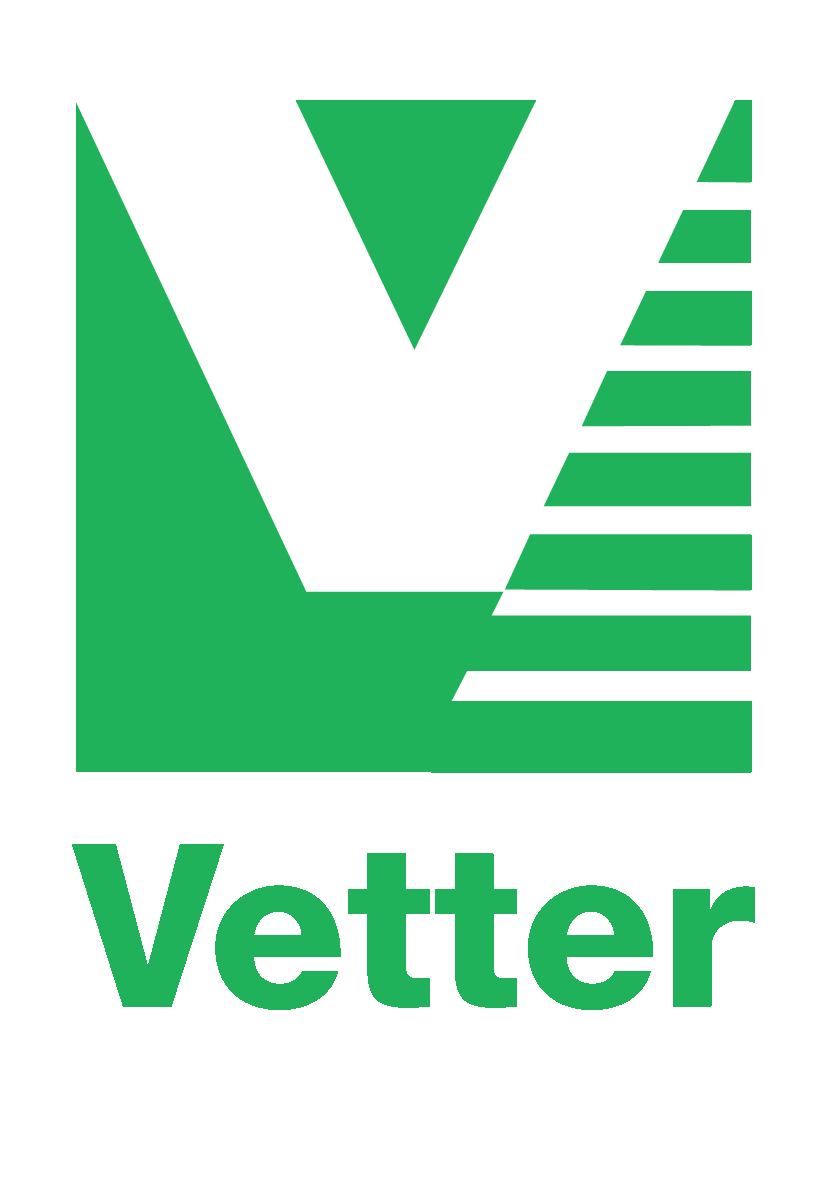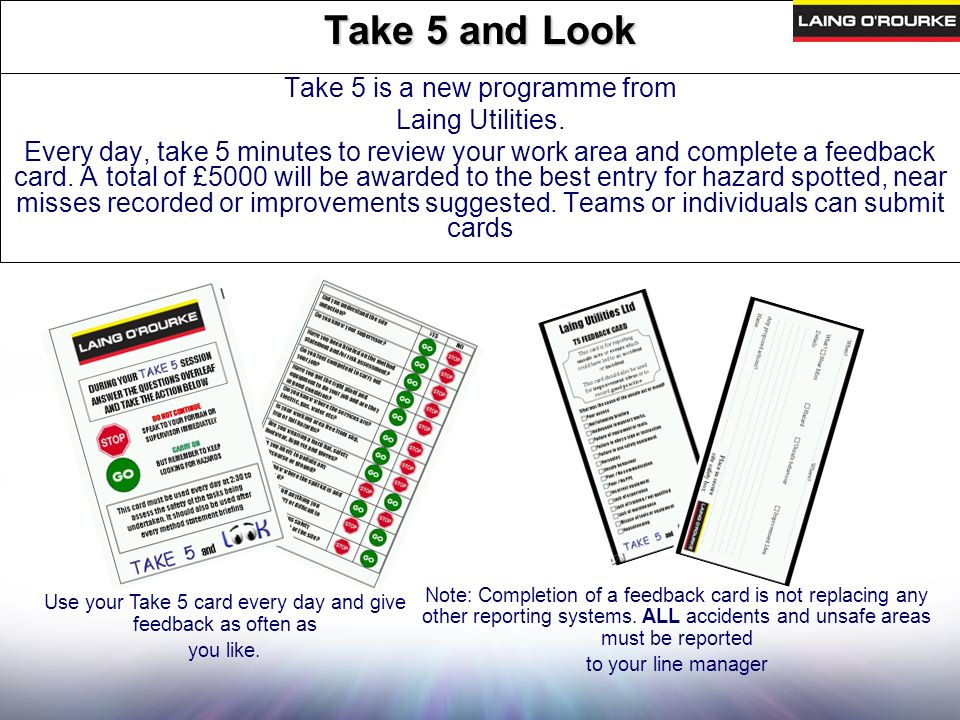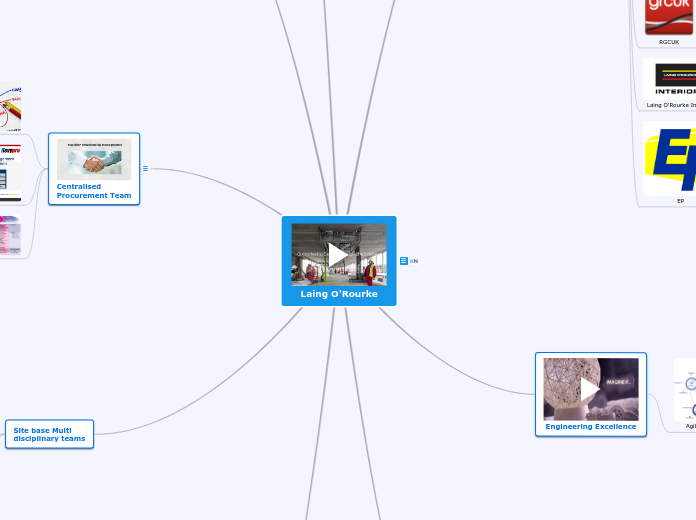Laing O'Rourke
IMBA 2019 January intake class 3: Operation ManagementFinal individual exercise: Mind Map on Laing O'RourkeBy: Antoine LamarcheLean Construction is about creating value and reducing waste and waste in the construction industry represents 30% of the total activities, causing overrun of the project and delay. Laing O'Rourke is a leader in finding innovative solutions to tackle this waste which are revolutionising the industry. Yet as with all innovators in an established industry they are encountering difficulties certain areas which we will try to address using the framework learned in this course.
Vertically Integrated
Supply Chain
Laing O'Rourke is vertically integrated to provide a one stop solution for infrastructure project.As we saw session 12 costumer service is essential to running a successful business. Laing O'Rourke achieves this by creating special relationship with main clients. It uses it large array of services and capability to remove a lot of the usual headaches that client have when they have to contract multiple contractors to get the final product.They own a large and varied range of companies that work together to deliver all aspects of a construction solution using both traditional methods and their in-house DFMA capacity.The difficulty is increasing the flow of information between the different organisations to create a seamless and lean work flow to reduce the wastes within the current process.As we have seen in session 2 & 3 it important for Laing to understand the process flow within the companies to remove bottlenecks and match supply with demand. For Laing O'Rourke the main bottlenecks is the flow of information between each subsidiaries which act like individual silos.

Explo're
Plant hire company bace in the UK

Explo're Manufacturing
Precast manufacturer made up of Explore Industrial Park in Steetley UK and CHt Manufacturing in Oldbury Australia.

Expanded
Deliver the full range of demolition, site remediation, piling, precast concrete, post-tensioning and structures techniques.Based in the UK and Australia

Crown House
UK’s leading building services providers. Its Data Solutions division is an international provider of business-critical information management infrastructure, including banking data centres, delivering structures that perform to the most exacting standards.

Vetter
Specialist stone contractor within the Laing O’Rourke group and a leading company within the UK stone industry.

Sunshift
Australian based pre-fabricated modular and movable solar power plant for large-scale, on-grid and off-grid electricity generation.

Select
Plant hire company with a large and diverse ranges of equipment, accommodation and tools to deliver on every type of construction project. Based in the UK, Select also has extensive operations in Australia and the United Arab Emirates.

RGCUK
Europe's leading manufacturers and suppliers of glass reinforced concrete products to the architectural, civil engineering and rail industries.Based in the UK

Laing O'Rourke Interiors
Joinery specialist operating in the UAE. With capabilities in interior contracting and the design, manufacture and installation of high quality furniture and joiner.

EP
Producer of architectural concrete cladding. With an established glass reinforced concrete (GRC) division producing a range of products, from cladding to highly ornate screening, which is very popular in the region. Based in Dubai. All Concrete is produced in-house using local UAE and OMANI aggregates
Engineering Excellence

Agile methodology
The engineering in Excellence group is a multi-disciplinary team with members from diverse backgrounds and industries that strives to find innovative ways to challenge the way the construction industry tackles engineering challenges. This team uses the agile methodology to come up with minimum viable products that they can test, validate and improve through rapid failure.
Fishbone diagram
The Agile mindset generated by the Engineering Excellence team finds it difficult to percolate into the business as we saw in session 11 due the resistance to change, internal politics and risk involved with getting things wrong in this industry in terms of:MonetaryTime or programLivesThis makes the industry more reluctant to embrace changes in the Agile methodology which relies on failing fast and often to develop ever more performant prototypes until viable final product can be achieved.As discussed in session 7&8 the 5s tools could be used to get the rest of the organisation to buy into the process by organising workshops with employees throughout the firm to do Fishbone diagram with value stream mapping would help to identify more waist to get the agile mindset to be come further imbedded within the culture of Laing O'Rourke.

Take 5 cards Kaisen
Take 5 cards were implement on Laing O'Rourke sites to empower employees to make suggestions to Management teams.The Management team engages to initiate the process of addressing these suggestion within 2-5 working days depending on the urgency of the suggestion.This card system is not pure Kaizen. It is acting more as way to get feedback from the employees and address HSE issues rather than purely driving for innovation. They help the sites continuously improve the safety of the sites.
Big Data
Recommendations 2:Integrated Big Data in Laing O'Rourke's business. Doing so would help solve the following challenges:Using IoT to track workers movements in the equivalent of the Spaghetti Diagram we saw in session 7Using the work pack data to improve Heath, Safety & Environment (the video attached)Combining Big Data, Blockchain and AI to automatically create lessons learned from NCR, RFI, and Work Packs that can be share with all the department within the firm to make the design, operation and tendering teams more efficient at their job.This is where big data
Big data is a high volumes of low-density, unstructured data, from a range of data sources. These data sets are so voluminous that traditional data processing software just can’t manage them. But these massive volumes of data can be used to address business problems you wouldn’t have been able to tackle before.
Use of big date with IoT
Minute 11:20 to 17:50Show two simple example of big data being used to reduce waist on construction project.
Source of data in the construction industry
The construction industry has many source of data. All of it is meticulously collected but rarely used in an optimal way.Big data would enable the industry to really up the game in the change of removing waste and improving safety in the construction process.
Labour (HR)
Weather
Progress
3D Model Data
2D drawings
Heath, Safety & Environmental information
Financial
Request for Further Information
Schedule
Quality Records Including supplier certification
Maintenance
Reality Modelling
Change tracking
Off site manufacture
Laing O-Rourke has the Off site manufacturing capacity trough it Explo're plant. This helps them to run a leaner construction company by moving 70% of the work traditionally done onsite, offsite into their factory thereby removing a lot of the waste in the process through standardise and automate the building processes as we saw in session 7 & 8.The benefits associated with doing this were:60% improved productivity.30% reduction in project schedule.Reductions in the workforce on site which lead to reduction in number of accident.placing the factory in the midland which is a less economically wealthy region of the UK allowed for lower labour cost, easier access to the whole of the UK as it is midway between London and Glasgow, and the economic development of the area.Cost of the factory:Large overhead costs.High inventory cost compared to traditional construction businesses which requires inventory planing.More time required in the design and planing stage of construction.Off site manufacturing means that the site is more exposed to the risk of changes in design and site condition being different form that expected.

Just in time + Pull
Laing O'Rourke applies Just in time and "Pull Production" in their manufacturing plant.Every component is built on demand once an order has been place for the component from site. This requires the design for the building to be locked in place well in advance of construction due to the long lead times for more specific component.As we saw in session 7&8 using Just in Time and Pull production reduces inventory levels by exactly matching supply with demand thereby reducing the waste related to over production and idle inventory.

Standardisation
Automation
BIM
Laing O'Rourke (LOR) has embraced BIM and digital modelling as way to effectively control some of the challenges they were facing with their off site manufacturing.Without BIM and digital modelling of site manufacturing would be impossible on the scale LOR is attempting to do it.It was key to be able to model the entirety of the project within its surroundings to design effective modular solution for that project and to come up with realistic ways to assemble it.BIM in this this sense is very much used as the agile tool that we saw in session 7&8. it enables LOR to create 3D mock ups to test that their solution will work before actually building prototype and finally the real product reducing the time to market as we saw in session 13.

Clash detection

Helps communication of information
in multi stack holder project
The BIM model is great for marketing purposes but is most effective to visualise challenges and coming with appropriate solution. The model can be used to test the proposed solution in theory and to communicate the information to the different stakeholders.The issue with the model is that it does not get updated as fast as the 2D drawings and there is still a perception that it is less accurate then 2D drawing.

Centralised
Procurement Team
A we saw in session 7&8 having SRM (Supply Relationship Management) is key to having a lean management.At LOR Procurement is centralised allowing projects to negotiate better prices for goods and services.The procurement team select a number of suppliers that it builds a relationship with.Project are only allowed to use approved suppliers unless special permission has been given by the procurement team. This allow the procurement team to ensure the quality of the suppliers and to audit them to make sure that they are compliant with Laing O'Rourke safety and quality standards.Where the relationship with the suppliers fail is when it comes to communication to match supply and demand on site.

Site base Multi
disciplinary teams

Agile
The majority of employee in Laing O'Rourke are site based which allows the team to address all aspect of projects from the the engineering to the document control, BIM Technician and environmental issue.As per Session 11 this helps break silos the rest of the areas of the business allowing LOR to quickly address any challenges that arise in the project and to have a better alignment of the teams.For the reason above LOR as set up a "One Team" approach where all individuals are being evaluated on the progress of the project they are working rather than the department they work in.The Silo problem is still striking when it comes to working with external contractors and supplier.
Genchi Genbutsu
All employee are expected to carry out a site tour / inspection at least once a month and to produce a report with best practice observed and improvement that could be made.As we saw in Session 7&8 this naturally leads back to Kaizen manager are more in tough with what is happening on projects.Also having so many different people with varied backgrounds that do not usually work on site doing site inspection means that the recommendation are much richer and really provide a lot of added value.

Jidoka
The Jidoka culture is being implement slowly on project. Any individual can stop the work on the ground of quality or HS without any risk to his or her career.It takes time for this cultural shift to permute the organisation as there is always the reluctance to affect the program or the budget by stoping work to resolve issues. With time and a lot of training within the company the culture is slowly changing, leading to much safer places of work and high quality of work as we saw in session 7&8.
Blockchain
Recommendations 1:Integrated Blockchain in Laing O'Rourke's business. Doing so would help solve the following challenges:Lessons learned do not travel well from one project to another as there are very few communications between them. Having all the inspection reports done on a tablet with a decentralised ledger would allow every site to benefit from the information.Quality disconnect between site, design and manufacturing plant could easily be resolved by using Block Chain or at least a decentralised ledger system with RFiD to follow the progress of production and the as-built data both on site and in the factory to allow both to react quicker to changes.A centralised ledger would allow more visibility between the suppliers and the project teams more effectively matching the demand with the supply. This is especially true for concrete suppliers with the number of trucks they are providing to projects for big pours.Smart contact would help reduce the paper work with preferred suppliers and would help strengthen the relationshipBlock Chain could be used to track the changes to BIM models and bring traceability and confidence to the users of the model.
Supply Chain Management
Problem
Lack of transparency in our current system.
Difficult to investigate illegal or unethical practices.
Inefficient matching of demand with supply
Solution BlockChain provides
Full transparency
Easy to track provenance of materials
Easy to match demand with supply
Smart Contract
Reduce cost of contracts, improve utilisation of talent and increase the speed of transaction.
